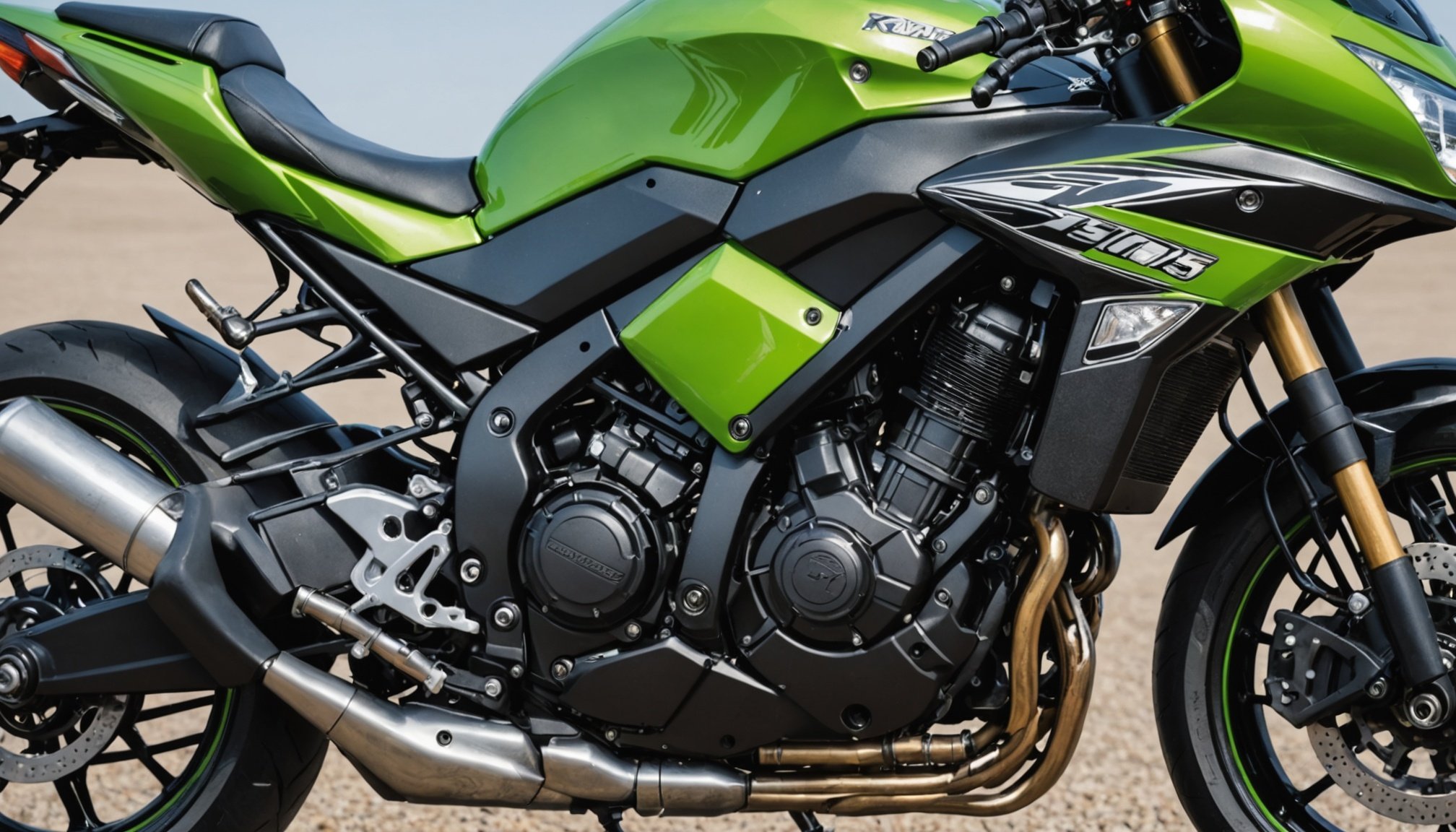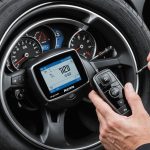Unlock Your Kawasaki Ninja 650’s Full Potential: A Comprehensive Guide to Upgrading Your Air Filter for Enhanced Performance
Why Upgrade Your Air Filter?
When it comes to enhancing the performance of your Kawasaki Ninja 650, one of the most overlooked yet crucial components is the air filter. The air filter plays a vital role in ensuring your engine receives the clean air it needs to run efficiently. Here’s why upgrading your air filter is a smart move:
- Improved Engine Performance: A high-quality air filter can significantly enhance your bike’s engine performance. By allowing more clean air to enter the engine, you can expect better throttle response, increased power, and a smoother riding experience[3].
- Fuel Efficiency: A clean air filter is essential for maintaining good fuel efficiency. A clogged or low-quality air filter can lead to decreased fuel efficiency, which not only affects your wallet but also the overall health of your engine[3].
- Longer Engine Life: Regularly inspecting and upgrading your air filter can extend the life of your engine. Dust, dirt, and other debris can cause wear and tear on your engine’s internal components, so keeping the air clean is paramount.
Choosing the Right Air Filter for Your Kawasaki Ninja 650
Selecting the right air filter for your Kawasaki Ninja 650 can be a bit overwhelming with the numerous options available. Here are some key points to consider:
Have you seen this : Ultimate diy guide: how to replace front fork seals on your honda crf450x like a pro
Types of Air Filters
- Stock Air Filters: These are the air filters that come with your bike. While they are adequate, they may not offer the best performance and filtration.
- Aftermarket Air Filters: These are designed to provide better airflow and filtration. They are often made from high-quality materials and are specifically engineered for your bike model.
- Example: The TST WORX Airbox for the Kawasaki Ninja series is a complete replacement of the stock airbox, including the air filter and velocity stacks. It is designed to improve airflow and performance[2].
Key Features to Look For
- Material: Look for air filters made from high-quality materials such as cotton, foam, or synthetic fibers. These materials offer better filtration and airflow.
- Ease of Installation: Ensure the air filter is easy to install. Some aftermarket air filters may require minor modifications, but they should generally be straightforward to fit.
- Example: The installation of the TST WORX Airbox requires a small modification to a tab attached to the frame, but it does not require any changes to the stock airbox itself[2].
- Maintenance: Consider how often you need to clean or replace the air filter. Some filters are washable and reusable, which can be a cost-effective option.
- Example: The air filter included with the TST WORX Airbox can be cleaned and washed after each race weekend, and then re-oiled for continued use[2].
Step-by-Step Guide to Installing a New Air Filter
Installing a new air filter on your Kawasaki Ninja 650 is relatively straightforward, but here’s a detailed guide to help you through the process:
Preparation
- Tools Needed:
- Screwdrivers (flathead and Phillips)
- Allen wrench (if required)
- New air filter
- Any specific tools mentioned in the manufacturer’s instructions
- Location: Ensure you have a clean and well-lit workspace.
Removal of the Old Air Filter
- Locate the Airbox: The airbox is usually located on the side of the engine or under the fuel tank. Consult your bike’s manual if you’re unsure.
- Remove Screws and Fasteners: Use the appropriate tools to remove the screws and fasteners holding the airbox in place.
- Pull Out the Airbox: Gently pull out the airbox to access the old air filter.
- Remove the Old Air Filter: Carefully pull out the old air filter from the airbox.
Installation of the New Air Filter
- Inspect the New Air Filter: Before installation, inspect the new air filter for any damage or defects.
- Install the New Air Filter: Place the new air filter into the airbox, ensuring it is properly seated and aligned.
- Reassemble the Airbox: Put the airbox back in its original position and secure it with the screws and fasteners you removed earlier.
- Tighten Everything: Make sure all screws and fasteners are tightened securely but avoid over-tightening.
Benefits of Upgrading Your Air Filter
Upgrading your air filter can bring several benefits to your riding experience and the overall performance of your Kawasaki Ninja 650.
Topic to read : Elevate your motorcycle style with our custom sticker kits
Enhanced Power and Performance
- A high-performance air filter allows more clean air to enter the engine, resulting in better throttle response and increased power. This is particularly noticeable in the lower rpm ranges, where the Ninja 650’s engine is tuned for strong low-end torque[1].
Improved Fuel Efficiency
- By ensuring your engine gets the clean air it needs, you can improve your bike’s fuel efficiency. This not only saves you money on fuel but also reduces the environmental impact of your riding[3].
Extended Engine Life
- Regularly upgrading and maintaining your air filter helps protect your engine from dust, dirt, and other debris. This can significantly extend the life of your engine and reduce the need for costly repairs.
Practical Tips and Maintenance Advice
Here are some practical tips and maintenance advice to keep your air filter in top condition:
Regular Inspection
- Inspect Every 15,000 to 20,000 Miles: Regularly inspect your air filter to ensure it remains clean and free from debris. This interval can vary depending on your riding conditions[3].
Cleaning and Replacing
- Clean the Air Filter: If your air filter is washable, clean it according to the manufacturer’s instructions. For example, the TST WORX Airbox filter can be cleaned and washed after each race weekend[2].
- Replace When Necessary: If the air filter is damaged or cannot be cleaned, replace it with a new one. It’s better to err on the side of caution to ensure optimal engine performance.
Comparative Analysis: Stock vs. Aftermarket Air Filters
Here’s a comparative analysis to help you decide between stock and aftermarket air filters:
| Feature | Stock Air Filter | Aftermarket Air Filter (TST WORX) |
|---|---|---|
| Material | Standard paper or foam | High-quality cotton or synthetic fibers |
| Airflow | Limited airflow | Improved airflow and performance |
| Ease of Installation | Easy, no modifications needed | May require minor modifications |
| Maintenance | Replace every 15,000 to 20,000 miles | Cleanable and reusable |
| Cost | Generally cheaper | More expensive upfront but potentially cost-effective in the long run |
| Performance Impact | Adequate but not optimal | Significant improvement in power and throttle response |
Real-World Examples and Testimonials
Here are some real-world examples and testimonials from riders who have upgraded their air filters:
- TST WORX Airbox User: “After installing the TST WORX Airbox, I noticed a significant improvement in my bike’s performance. The throttle response is much smoother, and I feel a noticeable increase in power, especially in the lower rpm ranges.”[2]
- Kawasaki Ninja 650 Owner: “I upgraded to a high-performance air filter and was amazed at how much better my bike ran. The fuel efficiency improved, and the engine felt more responsive and powerful.”
Upgrading your air filter is one of the simplest and most effective ways to enhance the performance of your Kawasaki Ninja 650. By choosing the right air filter, following a straightforward installation process, and maintaining it regularly, you can unlock your bike’s full potential and enjoy a more satisfying riding experience.
Whether you’re a casual rider or an avid enthusiast, investing in a high-quality air filter is a decision that will pay off in the long run. So, take the first step today and discover the difference a new air filter can make for your Kawasaki Ninja 650.









